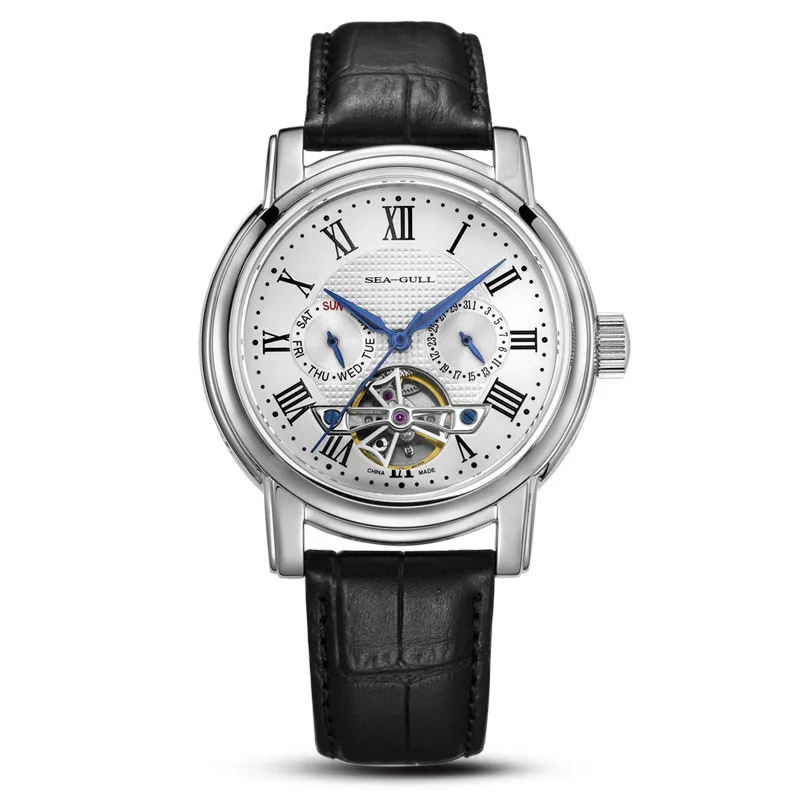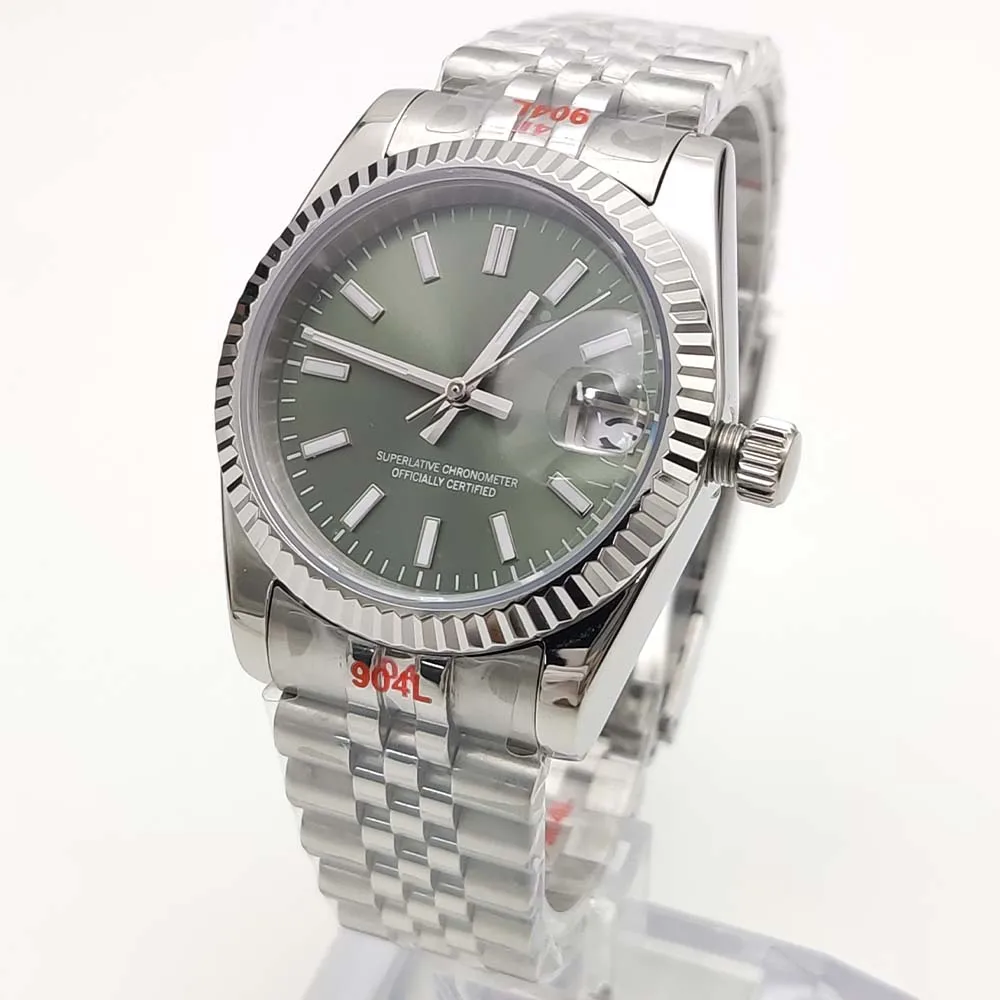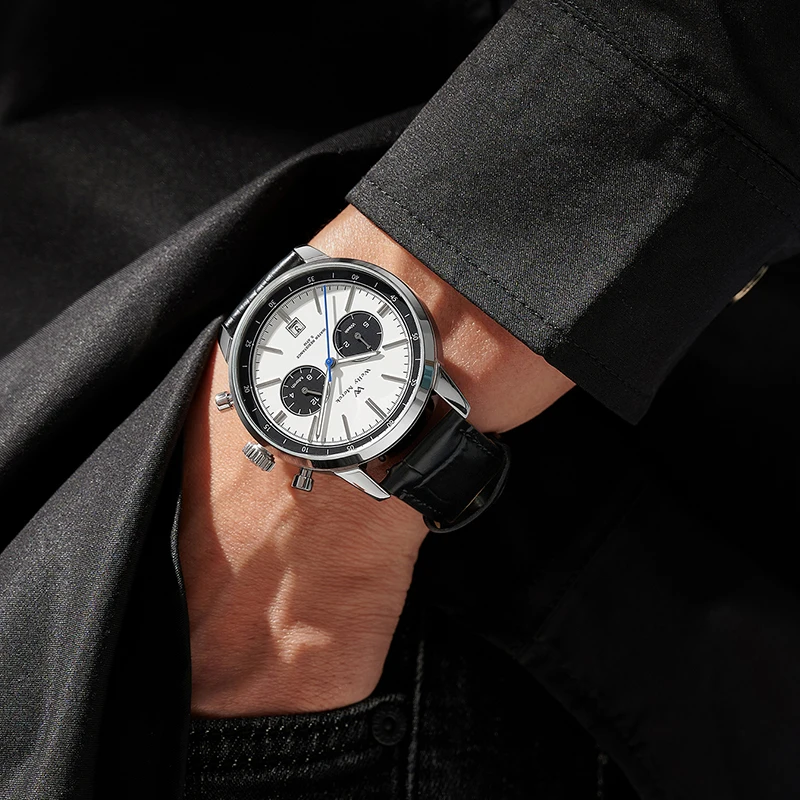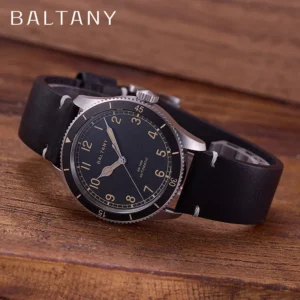Introduction: The Fascinating World of Chronograph Watches
Chronograph watches represent one of watchmaking’s most practical and visually distinctive complications. At its core, a chronograph is simply a watch with an integrated stopwatch functionality, allowing the wearer to measure elapsed time intervals independently of regular timekeeping. The term “chronograph” derives from Greek origins: “chronos” meaning time and “graphein” meaning to write—literally, to write time.
These remarkable timepieces occupy a special place in horological tradition, balancing utilitarian functionality with mechanical artistry. While digital stopwatches now exist in abundance, the elegant engineering of a mechanical chronograph—where gears, levers, and wheels work in precise harmony—continues to captivate watch enthusiasts. The ability to capture time intervals with a simple press of a button makes chronographs both practical tools and expressions of fine craftsmanship.
Definition: A chronograph watch combines traditional timekeeping with stopwatch functionality, featuring additional sub-dials and pushers that allow the wearer to measure elapsed time while maintaining regular time display.
Before exploring the fascinating details of chronograph functionality, it’s worth addressing a common point of confusion in the watch world—the distinction between chronographs and chronometers. The history of dive watch engineering shows how specialized timekeeping functions evolved to serve practical purposes, with chronographs representing one of the most enduring complications.
Chronograph vs. Chronometer: Understanding the Difference
Many watch enthusiasts, especially newcomers to horology, often confuse chronographs and chronometers—two entirely distinct concepts in the watch world.
A chronograph, as we’ve established, refers to functionality—specifically, the stopwatch capability integrated into a timepiece. You can identify a chronograph by its physical features: additional pushers on the case side and sub-dials on the watch face.
A chronometer, by contrast, refers to a certification of accuracy. When a watch is designated as a chronometer, it means the movement has passed rigorous testing standards (typically by COSC, the Official Swiss Chronometer Testing Institute) confirming its exceptional precision under various conditions.
The distinction is important because a watch can be both a chronograph and a chronometer simultaneously. In fact, many high-end chronographs also carry chronometer certification, indicating both stopwatch functionality and exceptional accuracy.
| Feature | Chronograph | Chronometer |
|---|---|---|
| Definition | A watch with stopwatch functionality | A watch with certified accuracy |
| Identifiable by | Pushers and sub-dials | Usually indicated on the dial |
| Primary purpose | Measuring elapsed time intervals | Ensuring precise timekeeping |
| Certification required | No | Yes (typically COSC) |
| Can be combined | Yes, a watch can be both | Yes, a watch can be both |
The ongoing evolution of dive watch technology has incorporated both chronograph functions and chronometer-level precision in many professional timepieces, showing how these distinct concepts can complement each other.
Essential Components of a Chronograph Watch
Understanding the physical components of a chronograph watch is crucial to appreciating its functionality. Each element plays a specific role in the operation of this sophisticated timekeeping tool:
Pushers
- Top Pusher (usually at 2 o’clock): Controls start and stop functions
- Bottom Pusher (usually at 4 o’clock): Resets the chronograph hands to zero
- Some models feature screw-down pushers for better water resistance
Sub-dials
Chronographs typically feature 2-3 sub-dials in various configurations:
– Bi-compax: Two sub-dials, usually minutes counter and running seconds
– Tri-compax: Three sub-dials, typically minutes counter, hours counter, and running seconds
– Sub-dials vary in size and position depending on the movement used
Central Chronograph Seconds Hand
Unlike the regular seconds hand that runs continuously, the chronograph seconds hand:
– Remains stationary until activated
– Moves precisely to measure elapsed seconds
– Often features distinctive coloring for better visibility
– Returns to zero when reset
Tachymeter Scale
A common feature on many chronographs, typically appearing on the bezel or outer edge of the dial:
– Allows calculation of speed based on time elapsed over a known distance
– Usually calibrated for a one-kilometer or one-mile distance
– Displays units in terms of “units per hour”
Our automatic chronograph watches collection showcases these components in various designs, demonstrating how manufacturers integrate these elements while maintaining distinct aesthetic approaches.
How to Operate a Standard Two-Pusher Chronograph
Operating a chronograph watch is straightforward once you understand the purpose of each pusher. The standard two-pusher chronograph follows a simple sequence of operations:
Starting the chronograph
– Press the top pusher (usually positioned at 2 o’clock)
– The central chronograph seconds hand will begin moving
– Sub-dial hands for minutes and hours (if present) will advance as appropriateStopping the chronograph
– Press the top pusher again
– All chronograph hands will stop immediately
– The elapsed time can now be read across the various indicatorsReading the elapsed time
– The central seconds hand shows elapsed seconds
– The minute counter sub-dial typically tracks up to 30 minutes
– The hour counter sub-dial (if present) typically tracks up to 12 hoursResetting the chronograph
– After stopping the timing, press the bottom pusher (usually at 4 o’clock)
– All chronograph hands will return to their zero positions
– The watch is now ready for a new timing operation
Important precautions to keep in mind:
– Never attempt to reset the chronograph while it’s running, as this can damage the mechanism
– Be mindful of water resistance—operating pushers underwater can compromise water resistance unless the watch is specifically designed for underwater chronograph operation
– Chronograph functions typically use more energy, potentially affecting power reserve in mechanical watches
For deeper technical insights, our article on understanding chronograph movement watches explores the mechanical principles that make these operations possible.
Reading and Interpreting Chronograph Sub-Dials
One of the most challenging aspects of using a chronograph watch is learning to correctly read its sub-dials, which often feature different scales and measurement increments.
Common Sub-Dial Configurations
30-Minute Counter:
– Typically divided into 30 or 60 segments
– Each segment usually represents 1 minute or 30 seconds
– May include numbered markers at 5, 10, 15, 20, 25, and 30
– Hand makes one complete rotation per 30 minutes of elapsed chronograph time
12-Hour Counter:
– Typically divided into 12 segments
– Each segment usually represents 1 hour
– Often has numbered markers at 3, 6, 9, and 12
– Hand makes one complete rotation per 12 hours of elapsed chronograph time
Running Seconds:
– Not part of the chronograph function
– Continues running regardless of chronograph operation
– Shows that the watch is working properly
– Typically completes one rotation per minute
Reading Tips:
– Always identify which sub-dial is which before attempting to read the time
– Note the increments on each sub-dial—they’re not always obvious
– Remember that sub-dial hands move at different speeds
– Practice reading with specific timing exercises
The placement and design of sub-dials vary significantly across different watch models. Our chronograph pilot watches collection demonstrates how these elements are arranged for maximum legibility in aviation-focused timepieces.
Different Types of Chronograph Mechanisms
The visible operation of a chronograph masks the complex engineering happening beneath the dial. Several distinct mechanisms power chronograph watches, each with its own characteristics:

Column-Wheel Chronographs
- Considered premium and more refined
- Feature a column wheel resembling a castle turret that controls operations
- Provide smoother pusher action with more precise feedback
- Typically found in higher-end luxury chronographs
- Generally more expensive to manufacture
Cam-Lever Chronographs
- More economical to produce but still reliable
- Use a cam and lever system instead of a column wheel
- Slightly more abrupt pusher action
- Found in most mid-range chronograph watches
- More robust against user error
Clutch Systems
Horizontal Clutch:
– Traditional system where gears engage horizontally
– May cause slight second hand jump when starting
– More common in classic chronograph designs
Vertical Clutch:
– Modern system where gears engage vertically
– Eliminates jumping of the seconds hand when starting
– Reduces wear on components
– Typically found in higher-end contemporary chronographs
Power Sources
- Hand-wound chronographs: Require regular winding, often more slender in profile
- Automatic chronographs: Self-winding through wrist motion, typically thicker cases
- Quartz chronographs: Battery-powered, offering high accuracy and lower maintenance
The enduring legacy of chronograph complications demonstrates how these mechanisms have evolved while maintaining their fundamental principles across decades of watchmaking history.
Specialized Chronograph Variants and Their Functions
Beyond the standard chronograph, several specialized variants offer enhanced functionality for specific timing needs:
Flyback Chronographs
- Allow instant reset and restart with a single pusher press
- Eliminate the need to stop before resetting
- Originally designed for pilots who needed to time consecutive intervals quickly
- Require more complex mechanisms than standard chronographs
Rattrapante (Split-Seconds) Chronographs
- Feature two superimposed chronograph seconds hands
- Allow timing of two events that start simultaneously but end differently
- Operated by an additional pusher, usually integrated into the crown
- One of the most complex and prestigious chronograph complications
Monopusher Chronographs
- All chronograph functions controlled through a single pusher
- Sequential operation: start, stop, reset
- Historically the original chronograph design
- Valued for their simplicity and vintage aesthetic
- Often feature cleaner case profiles without multiple pushers
Decimal Chronographs
- Minutes sub-dial divided into 100 units instead of 60
- Designed for industrial applications requiring decimal time calculations
- Less common but highly specialized for certain professional uses
Digital-Analog Hybrid Chronographs
- Combine traditional analog hands with digital displays
- Often offer expanded functionality like multiple time zones
- Provide greater precision for timing
- Popular in sports and aviation applications
For watch enthusiasts seeking comprehensive information about these specialized variants, our definitive chronograph feature guide for collectors offers in-depth explanations and collecting advice.
Practical Applications of Chronograph Functions
Chronograph watches have served practical purposes across numerous fields since their invention. Their versatility makes them useful in both professional and everyday situations:
Sports and Athletics
- Timing races and competition laps
- Measuring rest intervals during training
- Tracking swim splits and running segments
- Timing game periods in team sports
Aviation
- Calculating flight time between waypoints
- Monitoring fuel consumption rates
- Timing approach and landing procedures
- Tracking holding patterns and procedural maneuvers
Automotive Applications
- Measuring lap times on racetracks
- Calculating average speeds
- Timing pit stops and service intervals
- Monitoring fuel efficiency over measured distances
Everyday Uses
- Timing cooking processes
- Keeping track of parking meters
- Measuring duration of presentations or meetings
- Timing meditation or exercise sessions
Professional Applications
- Medical: Timing pulse rates and medical procedures
- Scientific: Measuring reaction times in experiments
- Engineering: Testing response times in systems
- Diving: Tracking underwater time and decompression stops
The specialized design and functionality of aviation chronographs assist pilots in numerous flight-critical tasks, demonstrating how these watches evolved beyond mere timekeeping to become essential navigation tools.
Using the Tachymeter Scale
The tachymeter scale, found on the bezel or outer edge of many chronograph dials, is perhaps the most common additional scale but also one of the least understood.

Basic Tachymeter Function
A tachymeter allows you to calculate speed based on time traveled over a known distance (typically one kilometer or one mile). The scale works on the principle that speed equals distance divided by time.
Calculating Speed
- Start the chronograph when passing your starting point
- Stop the chronograph after traveling exactly one kilometer/mile
- Read the tachymeter value where the chronograph second hand points
- This value represents your speed in kilometers/miles per hour
Example: If it takes 30 seconds to travel one kilometer, the chronograph hand will point to 120 on the tachymeter scale, meaning your speed is 120 km/h.
Calculating Distance
The tachymeter can also be used in reverse:
1. Determine your constant speed (e.g., 60 km/h)
2. Start the chronograph and note the time elapsed
3. Stop the chronograph when the second hand reaches the number corresponding to your speed (60)
4. You have now traveled one unit of distance (1 km)
Limitations
- Most tachymeter scales only work for events taking between 7 and 60 seconds
- Accuracy depends on precise timing and distance measurement
- Not suitable for very low or very high speeds
- Requires a known distance or speed as a starting point
The mechanical principles that enable these calculations are explored further in our article about the inner workings of chronograph watches, which details how these scales interact with the movement itself.
Other Specialized Scales on Chronograph Watches
Beyond the popular tachymeter, chronograph watches may feature several other specialized scales, each serving specific measurement purposes:
Telemeter Scales
- Purpose: Measuring the distance to an event visible before it’s audible
- Common application: Calculating distance to lightning strikes or artillery fire
- How it works: Start the chronograph when seeing the flash, stop when hearing the sound
- Scale based on the speed of sound (approximately 343 meters per second)
- Typically calibrated in kilometers or miles
Pulsometer Scales
- Purpose: Measuring heart rate quickly
- Common application: Medical examinations and personal health monitoring
- How it works: Start the chronograph and count a specific number of heartbeats (often 15 or 30), then stop
- Scale directly indicates heartbeats per minute
- Often labeled “GRADUÉ POUR 15 PULSATIONS” or similar
Asthmometer Scales
- Purpose: Measuring breathing rate
- Common application: Medical evaluation of respiratory function
- How it works: Similar to pulsometer but counts breaths instead of heartbeats
- Less common than pulsometers but found on some medical chronographs
Decimal Minutes
- Purpose: Dividing minutes into 100 parts rather than 60 seconds
- Common application: Industrial time studies and scientific measurement
- How it works: Each “minute” is divided into 100 equal parts instead of 60 seconds
- Facilitates easier time-based calculations in decimal format
Many automatic pilot watches incorporate these specialized scales alongside chronograph functions, reflecting their professional origins in aviation and navigation.
Tips for Chronograph Maintenance and Care
Chronograph watches contain some of the most complex mechanisms in watchmaking, requiring special care to ensure proper function and longevity:
- Proper Pusher Operation
- Use gentle, deliberate pressure when operating pushers
- Never force a pusher that feels resistant
- Avoid pressing pushers underwater unless specifically rated for this use
Complete each operation fully before beginning another
Water Resistance Considerations
- Chronograph pushers create additional entry points for water
- Even “water-resistant” chronographs may not be suitable for operating pushers underwater
- Consider screw-down pushers for water activities
Have water resistance checked annually if you use the watch near water
Service Intervals
- Chronographs typically require service more frequently than time-only watches
- Follow manufacturer recommendations, generally every 3-5 years
- Professional service is essential—chronograph mechanisms require specialized knowledge
Irregular operation or sticking hands indicate need for immediate service
Avoiding Damage
- Keep chronographs away from strong magnetic fields
- Protect from impacts and drops, which can disrupt delicate chronograph alignment
- Avoid setting the date during chronograph operation
Keep chronograph reset to zero when not in use to reduce stress on components
Storage Recommendations
- Store in a watch winder if automatic and worn regularly
- If storing long-term, ensure the chronograph is reset to zero
- Use watch boxes with individual compartments to prevent scratches
Understanding typical automatic watch longevity provides context for chronograph maintenance, as these complex mechanisms often require more attentive care than simpler timepieces.
How to Choose a Chronograph Watch Based on Function
Selecting the right chronograph requires matching the watch’s specific features to your intended use:
Movement Considerations
- Mechanical: Offers traditional craftsmanship and smooth sweep; requires regular maintenance
- Automatic: Self-winding convenience with traditional mechanics; typically thicker case
- Quartz: Superior accuracy, lower maintenance, and typically more affordable
Sub-dial Configuration
- Two sub-dials (Bi-compax): Cleaner appearance, typically minutes and running seconds
- Three sub-dials (Tri-compax): More functionality, usually minutes, hours, and running seconds
- Multiple sub-dials: Specialized functions beyond basic chronograph features
Legibility Factors
- Contrast: High contrast between hands and dial improves readability
- Dial design: Applied indices and uncluttered layouts enhance readability
- Lume quality: Important for low-light timing situations
- Hand design: Distinct shapes help differentiate chronograph hands from time hands

Functionality Match
- Sports timing: Prioritize water resistance, shock protection, and clear legibility
- Professional use: Consider specialized scales relevant to your field
- Dress chronographs: Slimmer profiles and restrained designs for formal settings
- Daily wear: Balance between functionality, comfort, and style
Automatic Chronograph Watches, Chronograph Pilot Watches
Price range: $233.36 through $237.58 Select options This product has multiple variants. The options may be chosen on the product pageClassic Automatic Dress Watches, GMT Automatic Watches, GMT Pilot Watches
Price range: $1,240.86 through $1,463.33 Select options This product has multiple variants. The options may be chosen on the product pageAutomatic Chronograph Watches, Classic Style Dive Watches
$3,053.06 Select options This product has multiple variants. The options may be chosen on the product pageBronze Automatic Watches, Military Inspired Automatic Watches, Professional Spec Dive Watches
Price range: $1,442.21 through $1,442.82 Select options This product has multiple variants. The options may be chosen on the product pageProfessional Spec Dive Watches, Titanium Automatic Watches
$574.74 Select options This product has multiple variants. The options may be chosen on the product pageClassic Pilot Watches, Military Inspired Automatic Watches
$561.00 Select options This product has multiple variants. The options may be chosen on the product page
Our collection of professional-spec dive watches includes models with chronograph functions specifically designed for underwater timing applications, demonstrating how specialized timing functions can be adapted to extreme environments.
Common Questions About Chronograph Functions
Can chronograph pushers be used underwater?
Standard chronograph pushers should not be operated underwater unless specifically designed and rated for underwater use. Operating regular pushers underwater can compromise water resistance as water pressure can force moisture past the seals. Some dive chronographs feature screw-down pushers or special sealing systems that allow underwater operation.
How accurate are mechanical chronographs?
Mechanical chronograph accuracy varies by movement quality. High-end chronographs typically measure to 1/5th or 1/8th of a second, with the chronograph function itself being reasonably accurate. However, the overall timekeeping accuracy of a mechanical chronograph (±2 to ±20 seconds per day) is generally less precise than quartz alternatives (±15 seconds per month).
Why do chronograph watches typically cost more?
Chronographs are more expensive due to their mechanical complexity—they can contain 50-100+ additional components compared to time-only watches. This complexity requires more skilled assembly, extensive testing, and additional materials, all contributing to higher costs. Even quartz chronographs require more complex circuitry than standard quartz watches.
Does using the chronograph function affect power reserve?
Yes, running the chronograph function consumes additional energy in mechanical watches. This can reduce power reserve by 10-30% depending on the watch design. When a chronograph is running, it’s powering additional gear trains and hands, requiring more energy from the mainspring.
How often does a chronograph need servicing?
Chronographs typically require servicing every 3-5 years, slightly more frequently than time-only watches due to their complexity. Regular service prevents excess wear on chronograph components and ensures proper function. Signs that service is needed include sticky pushers, hands that don’t reset to zero, or irregular jumping of chronograph hands.
The question of whether chronograph watches are classy addresses the stylistic aspects that complement their functional features, helping wearers select timepieces appropriate for various settings.
The Enduring Appeal of Chronograph Watches
Chronograph watches stand at the fascinating intersection of engineering precision and practical utility. Understanding their functions doesn’t merely improve their usefulness—it deepens our appreciation for the remarkable mechanical choreography happening beneath the dial. Each push of a chronograph button sets into motion dozens of precision components working in harmony to capture fragments of time.
In our digital age, when smartphones can perform timing functions with greater accuracy, mechanical chronographs remain relevant because they represent something more meaningful than mere utility. They connect us to a tradition of craftsmanship that spans centuries, offering a tangible, mechanical experience in an increasingly digital world.
The emotional appeal of chronographs also stems from their association with moments of human achievement. From timing Olympic races to accompanying astronauts into space, chronograph watches have been silent witnesses to countless historic milestones. Each chronograph wearer becomes part of this legacy, carrying on their wrist not just a timing device, but a connection to the rich history of human ingenuity and adventure.
For enthusiasts and collectors, the appreciation of chronograph functions transforms these watches from accessories into mechanical art forms—engineering marvels that can be understood, operated, and admired for a lifetime.







